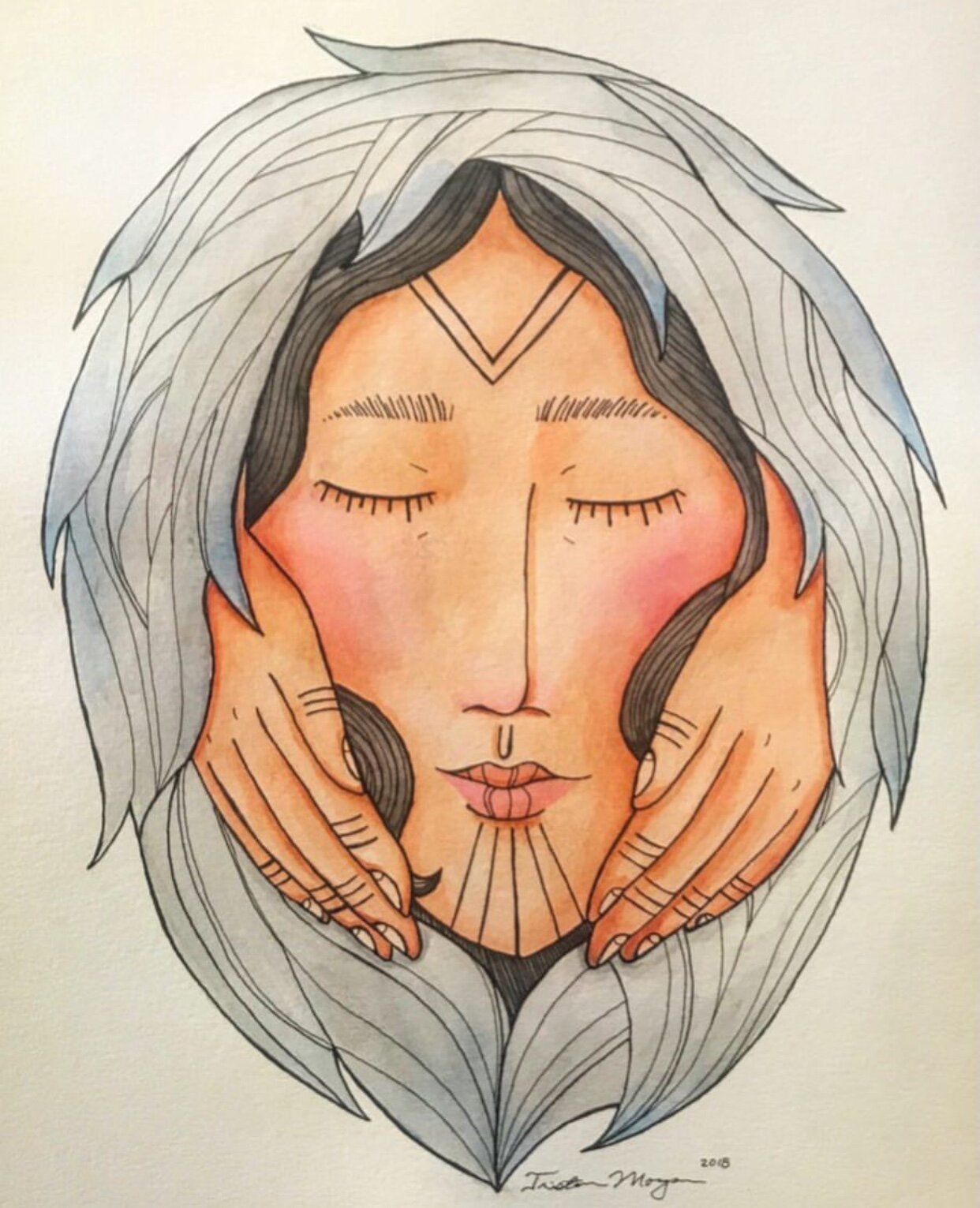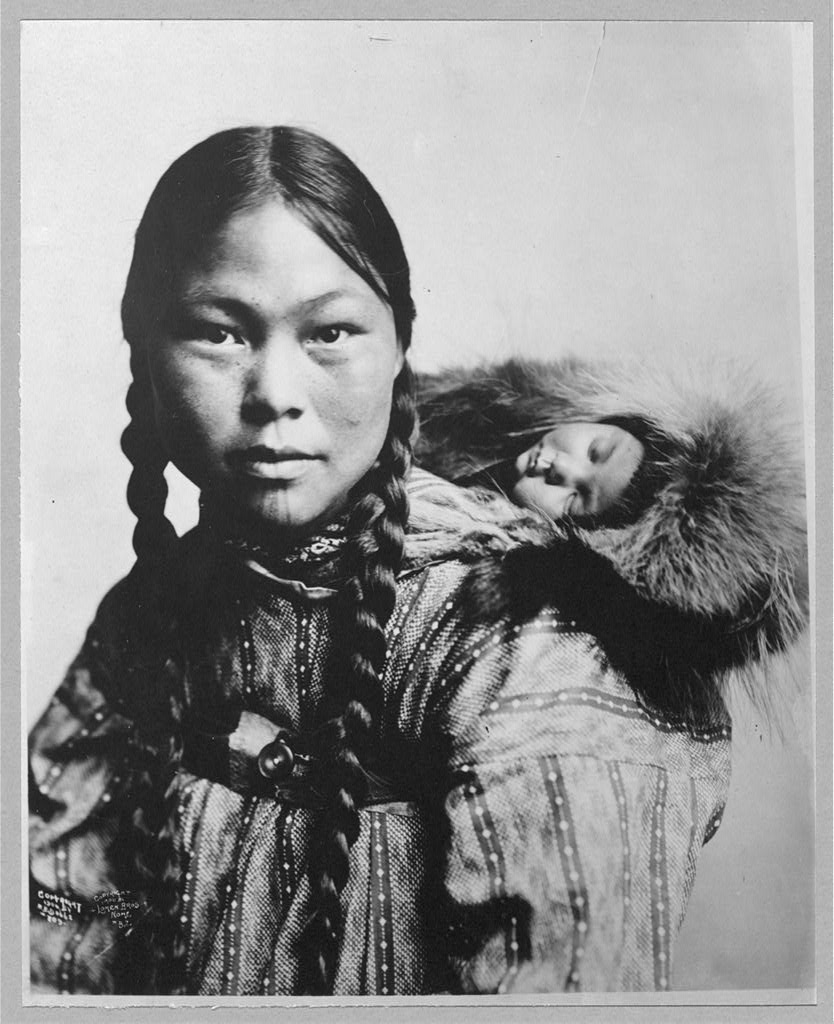Tribal Tattoos Series
A Tribe Called Beauty
For this article as part of the Tribal Tattoo’s Series, I chose the stunning and in my mind, pretty well known and very distinctive, Inuit tribal tattoos.
In order to represent the Inuit people properly and respectfully, seeing as I myself am Huron-Wendat & before the research I did for this article, didn’t know much at all about the Inuit people, let alone the history of their traditional tattoos, I asked an Inuit women named Tristan Morgan to lend me some information as well as share her story & the meaning of her beautiful face tattoo.
So before I dive into this article, I would like to say Miigwetch (Thank you!) to Tristan Morgan for allowing me to pick her brain and providing me with the knowledge I needed in order to make this article a proper representation of her people, the Inuit people.
In Inuit culture, tattoo’s are known to be mainly a women’s art which, personally, fills me with such joy.
An older women who had proven her embroidery skills, would be the tattooist. Her tools, being a bone, wood or steel needle, and a string of caribou sinew, would be tucked away in a bag made of seal intestine. She would use a traditional hand-poke and skin stitching methods.
A girl wasn’t marriageable until her face had been tattooed. Typically a girls first tattoo would be done on her face this being on either the forehead, the cheeks or the chin. If you’ve ever had your face tattooed or have a tattoo anywhere for that matter, you can only imagine how painful this first tattoo would be, not to mention the tattoo session could last full days. Once the tattooing process was finished, the tattoo itself would be sterilized with a urine-soot mixture.
When a women had been tattooed it meant that she had learned the essential skill’s of a women, this included making and repairing sealskin boots, learning how to chop ice and melting it for water and much, much more.
It has been told that the Sea Goddess denied entrance to the afterlife to a women whose fingers were not tattooed also women without face tattoos were forever banished to Noqurmiut, the ‘land of the crestfallen’, which essentially would be considered hell. When one is banished to Noqurmiut they spent eternity with their heads hanging down with smoke pouring out of their throats.
Unfortunately the sacred practice of tattooing was forbidden by the 19th and 20th century Christian. Once a source of pride in the Ink way of life had now become a mark of shamanism in a Christianized community, with the Christian missionaries marking tattooing a sin.
Though the techniques and customs were nearly lost, traditional tattoos are coming back within the Inuit community. A new generation is using tattoos to reclaim what was taken from their ancestors, restore their culture and traditions and show the world what it means to be a strong Indigenous women in the 21st century.
Tristan Morgan is one of those women. & this is her story…
"Traditional inuk tattoos are a resurfacing tradition that has since been stolen from my people when missionaries implemented Christian teaching during the turn of the century. Within my region, traditional tattoos were simple but the meaning was lost. My great grandma on my mom’s mom side had one line which represented her late husband. Since it’s been resurfaced, it’s been a means of reclamation. We’re taking back a tradition that was stolen from us and wearing it with pride Iñupiaq names are given after a family member passes away. I was named after my great grandmother Agnauraq Sikiagruk Kignaq on my mom’s dad’s side. My main name means “little woman” or “pretty girl”, as an endearment.
I got my tattoo September 1st of this year after I had a dream of my great parents coming to me and showing me my tattooed face in the still ocean. I told my mom and she said it was my ancestors talking to me so I held onto that and did my research on what kind of tattoos were done in my village of Wainwright, Alaska. And I came to this design while talking to Sarah Whalen who was the one who did my tattoo. We met to put the lines on my face so I could live with it but the process itself was ceremonial, spiritual, and healing. I meditated and as soon as I saw my face, it felt more like my face. Like I was supposed to look like this.
My tattooing tool was made specifically for me, and I actually still have it as a keepsake!”
When I asked her about the method that was used she told me it was the skin poke method. Also, we I asked her about the pain that is associated with getting her face tattooed, this was her reply:
"It wasn’t painful at all, at least not traditional pain? Like it hurt but it was empowering and calming."
Chi Miigwetch to the beautiful kwe, Tristan, for sharing her story and helping me in making sure I represent her people & her culture with the utmost respect and provide factual information in this article!
You can find Tristan on Instagram at:
You can find A Tribe Called Beauty on Instagram at:



